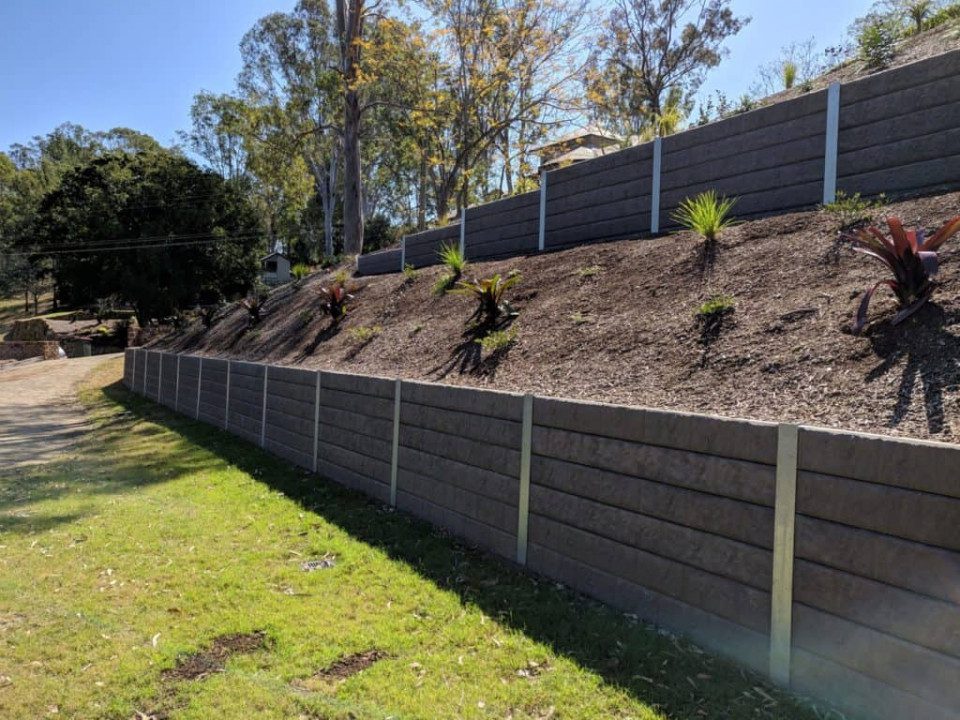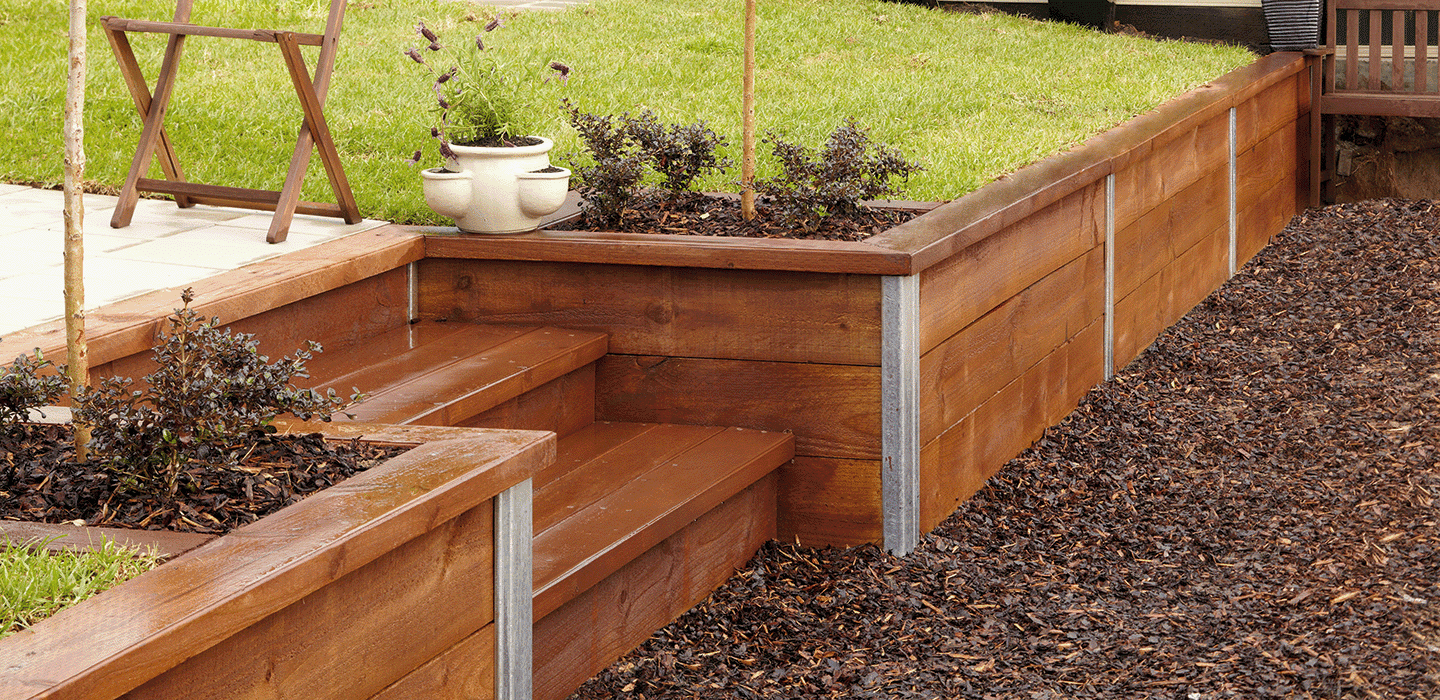Making Sure Structural Stability: The Value of Appropriately Constructed Maintaining Wall Surfaces in Avoiding Slope Failure
In the world of civil design and construction, the value of appropriately constructed preserving wall surfaces in averting slope failure can not be downplayed. By discovering the intricate interplay between these elements, a deeper comprehension of the crucial role that retaining walls play in protecting structural integrity and avoiding incline failing arises.
Role of Retaining Walls in Stability
The indispensability of maintaining wall surfaces in making sure incline security is extremely important in civil design techniques. Preserving wall surfaces serve a crucial function in protecting against dirt erosion, handling water overflow, and preserving the architectural stability of inclines. By sustaining near-vertical or upright grade modifications, retaining walls assist to redistribute side pressure put in by the soil, thereby minimizing the threat of incline failure.
One key feature of retaining walls is to combat the pressure of gravity acting upon the dirt mass behind them. This is achieved with correct layout and construction, which considers elements such as dirt kind, wall surface height, drainage arrangements, and possible additional charge loads. By properly retaining soil within defined borders, these structures help to maintain inclines and avoid landslides.
Additionally, maintaining wall surfaces contribute to the aesthetics of landscapes while offering practical benefits. They can produce terraced degrees for landscape design, assistance highways or frameworks on hills, and improve the general usability of sloped surface. Essentially, retaining walls play a vital role in maintaining slope security and ensuring the safety and long life of civil design jobs.
Elements Influencing Wall Performance
Variables that affect the effectiveness of retaining walls include dirt properties, wall design, and exterior lots. Soil properties play a crucial role in establishing the security and performance of a keeping wall. Factors such as dirt type, communication, interior friction angle, and groundwater problems can impact exactly how well a wall surface retains the dirt behind it. The layout of the preserving wall is one more key variable that influences its effectiveness. Correct wall layout takes into consideration aspects like wall elevation, wall kind (e.g., gravity walls, cantilever wall surfaces), reinforcement products, drainage systems, and building and construction methods to ensure the wall surface can withstand the side stress exerted by the retained soil. In addition, external tons, such as additional charge tons from nearby frameworks or traffic, seismic pressures, and water pressure, must be meticulously assessed throughout the design and building stages to ensure the wall surface can appropriately resist these outside pressures. By considering these elements thoroughly, engineers can build retaining walls that efficiently prevent incline failure and guarantee long-lasting architectural honesty.
Layout Factors To Consider for Retaining Walls
Including the essential elements of soil buildings and exterior lots right into the structural design procedure is necessary for establishing effective preserving wall surfaces that guarantee slope security. When making retaining wall surfaces, engineers must carefully review the attributes of the bordering soil, including its drainage, kind, and compaction residential properties. Recognizing these soil residential or commercial properties is critical for figuring out the appropriate wall surface reinforcement, elevation, and thickness needed to hold up against the lateral stress exerted by the soil mass.
In addition, outside lots such as surcharge tons from neighboring structures or web traffic, in addition to seismic pressures, must be thought about throughout the design stage. These loads can dramatically impact the security and performance of a maintaining wall surface, necessitating the use of proper layout techniques and materials to alleviate potential failure risks.
Furthermore, the selection of appropriate products, such as concrete, rock, over at this website or hardwood, should line up with the site-specific problems and aesthetic demands. Variable of safety considerations, water drainage stipulations, and construction techniques are also important elements that affect the total layout and capability of retaining walls in avoiding incline navigate to these guys failing. By very carefully taking into consideration these layout factors to consider, designers can make certain the architectural integrity and long-term stability of preserving wall surfaces.

Construction Best Practices for Resilience
When building keeping walls for optimal resilience and durability, adherence to industry-standard techniques and meticulous attention to information are paramount. To make certain the durability of a preserving wall surface, correct website preparation is important. This includes ample compaction of the soil, proper water drainage systems, and making certain the wall surface's foundation is audio. Making use of high-quality materials, such as cinder blocks or natural rock, is critical for the durability of the structure. In addition, utilizing proficient specialists with experience in building keeping wall surfaces can substantially influence the resilience of the end product.
Incorporating reinforcement techniques, such as geogrids or steel bars, can improve the architectural honesty of the retaining wall and prevent potential failures. By following these construction best practices, retaining walls can withstand the examination of time and properly protect against slope failure.
Significance of Appropriate Maintenance
Regular upkeep is essential for maintaining the structural honesty and capability of maintaining walls in time. Neglecting upkeep can bring about concerns such as erosion, cracks, or also full failure of the wall, endangering the stability of the slope it sustains. To make sure that keeping walls remain to perform their desired function efficiently, regular inspections need to be carried out to identify any type of signs of damage. These evaluations can aid in detecting very early indication of possible troubles, enabling prompt repair work to be brought out before the issues escalate (Retaining Walls Sunshine Coast).

Final Thought
To conclude, preserving wall surfaces play a crucial role in guaranteeing architectural integrity and avoiding slope failure. By considering elements influencing wall efficiency, adhering to design considerations, following building and construction finest techniques, and carrying out correct maintenance, the longevity of preserving wall surfaces can be made the most of. Retaining Walls Sunshine Coast. It is important to acknowledge the relevance of effectively created maintaining walls in maintaining stability and protecting against possible threats linked with incline failure
Factors that affect the efficiency of keeping walls consist of soil residential properties, wall surface style, and external lots. Appropriate wall style thinks about factors like wall surface height, wall surface kind (e.g., gravity walls, cantilever wall surfaces), support materials, water drainage systems, and building techniques to make certain the wall can withstand the side stress exerted by the preserved soil. By taking into consideration these aspects comprehensively, designers can construct preserving walls that properly stop incline failure and make certain long-lasting architectural stability.
Upkeep tasks might include removing water drainage systems to avoid water build-up behind the wall, fixing any noticeable cracks or damage, and making certain that the wall is complimentary from vegetation that might exert pressure on the framework. By taking into consideration elements influencing wall surface efficiency, sticking to create considerations, complying with building and construction best practices, and applying appropriate maintenance, the longevity of retaining walls can be made the most of.